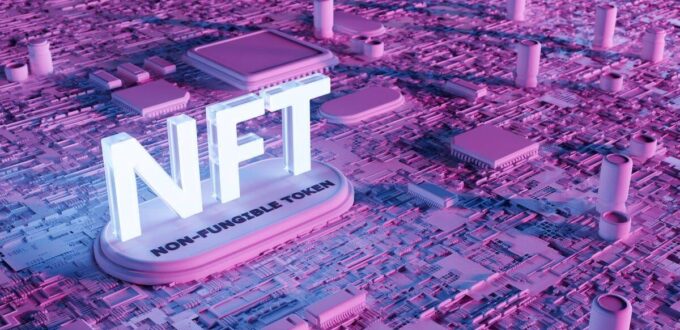Non-fungible-tokens (NFTs) have grow in popularity as celebrities and tech evangelists continue to jump onto the cryptocurrency bandwagon. What makes NFTs interesting is that they are fueled by blockchain technology and give exclusive ownership to the artists and creators.
If you’re an artist who is looking to convert and sell your digital art such as an image, video, GIF, music, etc to an NFT, we list some of the best NFT marketplaces where you can get your digital collectible published catering to the right audience.
(Before, we delve into the topic, take a quick detour of our article on how to convert your digital art to NFTs.)
OpenSea
 OpenSea is one of the largest NFT marketplaces. (Screenshot: OpenSea)
OpenSea is one of the largest NFT marketplaces. (Screenshot: OpenSea)
OpenSea is one of the largest NFT marketplaces. The platform facilitates creating, buying and selling NFTs. It is also called as the ‘ebay’ of NFTs, catering to more than 600,000 users, hosting 2 million collections comprising 80 million NFTs. The platform gives a quick tutorial if you are a first time NFT collector. OpenSea supports images, video, 3D and music. The company does not cater to any specific audience. It allows every artist, creator to buy, sell or even auction their NFTs.
To create or ‘mint’ an NFT, users pay something called ‘gas fee’. Gas fee is basically the transaction fee required to register your digital art into the blockchain smart contract. OpenSea charges service fee at the first NFT minting (anywhere between $70 to $300), but from the second NFT minting, users are only asked to pay gas fee.
The commission fee taken by Opensea is 2.5 per cent of sales. If you’re looking for a way to escape gas fee you could choose Polygon Ethereum blockchain.
Rarible
 Rarible allows users to collect royalties on sales. (Screenshot: Rarible)
Rarible allows users to collect royalties on sales. (Screenshot: Rarible)
Rarible ranks second on our list. It caters to a huge audience just like OpenSea. The homepage displays top sellers and NFT art collections, and allows you to search for NFTs via categories such as photography, games. The platform allows users to create an NFT, sell them for a fixed price or even conduct an auction. It should be noted that you don’t have to necessarily sell every minted NFT, you can merely house them on the platform.
For newbies who are minting NFT for the first time, you must pay two fees— wallet linking permission fee and for uploading your file on the Ethereum blockchain. These are network fees and does not go to Rarible, this could vary from $100 to $300. For minting the second time, you will be only asked to pay the gas fee. The commission fee taken by Rarible is 2.5 per cent of sales.
Rarible also allows users to collect royalties on sales, meaning that you can collect a percentage of the sale price not only when you first sell your NFT, but even if that person decides to sell the NFT to someone else. Creators can set royalty fees as high as 50 per cent.
Foundation
 Foundation is an invite-only platform. (Screenshot: Foundation)
Foundation is an invite-only platform. (Screenshot: Foundation)
Foundation NFT marketplace is not open-to-all. It is an invite-only platform, meaning that you need to be nominated by an existing user of the platform to be able to use the NFT marketplace. To nominate any user, creators on Foundation will need to sell at least one NFT on the marketplace before they can send out invites.
This platform works quite similar to OpenSea and Rarible. If the piece is resold on the secondary market, a 10 per cent royalty goes to the wallet that originally minted the NFT—in perpetuity.
When you collect a work using Buy Now, Offers, or Auctions, the NFT gets transferred to your wallet and appears on your Foundation collector profile. You can then display it in your virtual gallery, share it on social media, or sell it later on the secondary market.
SuperRare
 SuperRare charges a 3 per cent transaction fee for all purchases on the platform. (Screenshot: SuperRare)
SuperRare charges a 3 per cent transaction fee for all purchases on the platform. (Screenshot: SuperRare)
SuperRare NFT marketplace as the name describes, is the platform for unique and single-edition digital artworks. Each artwork is created by a verified artist and every artwork is distinctly different from each other on SuperRare. There is a 3 per cent transaction fee for all purchases on the platform.
Users are required to pay a gas fee for utilising the Ethereum blockchain. For primary sales, the platform charges a 15 per cent commission and creators receive 85 per cent. On secondary sales, creators receive a 10 per cent commission providing passive revenue from an artwork if it continues to trade on the secondary market.
Solsea
 Solsea NFT marketplace is based on Solana Network. (Screenshot: Solsea)
Solsea NFT marketplace is based on Solana Network. (Screenshot: Solsea)
The Solsea NFT marketplace is based on Solana Network. What makes Solsea unique is that it allows customers to attach licenses to their NFT items. This is a proprietary system for embedding copyright on copyrighted tokens.
Solsea offers two options for users—private and public listing. Users have the option to make their NFT public to all or private to only few people in the community. The NFT marketplace has something called a rarity index which represents the rarity of a digital collectible, giving it more value and clarity. Solsea accepts several cryptocurrencies as well as stablecoins, offers extremely low gas fee costs, and charges a flat commission rate of 3 per cent.

No Comments Yet